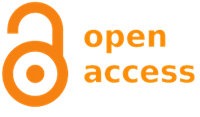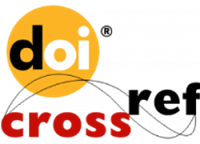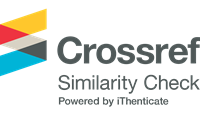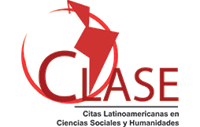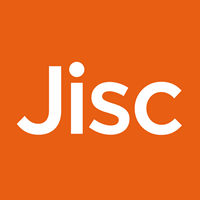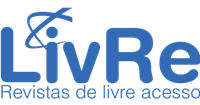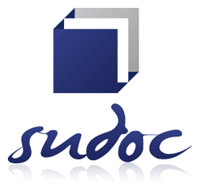The researcher and scientific divulgation in the context of cyberculture and artificial intelligence
Chamada temática: Redes Educativas e os desafios atuais da Cibercultura
Abstract
The production of scientific knowledge leads to an understanding of how a body of knowledge legitimated as Science is elaborated. In the productive plot, the role of the researcher in the research and dissemination of the knowledge produced is highlighted. In this perspective, the researcher uses research as an instrument for the development of Science and dissemination in response to the social function of knowledge. Producing and disseminating are essential stages of the research process. This study aims to understand how researchers of graduate programs at a public university in Bahia understand the role of scientific divulgation and present the context of Cyberculture and Artificial Intelligence as enabling the act of scientific divulgation. It constitutes an excerpt from empirical research that focused on the researcher and scientific dissemination. The data were collected through interviews with three professors/researchers from graduate programs and are analyzed comprehensively. As a result, it appears that researchers recognize the cyber and Artificial Intelligence context as fruitful to socialize the knowledge produced, but do not feel available and responsible for such a task. It is concluded that the understandings of researchers about Science draw the ways used to produce knowledge and support the behaviors related to scientific divulgation. Giving visibility to Cyberculture and the context of Artificial Intelligence, as a space-time for the socialization of collective knowledge and action, contributes to the approximation between researcher/society and science/culture.
Downloads
References
Araújo, C. A. A. (2006). A ciência como forma de conhecimento. Ciência & Cognição, 8, 127-142. Recuperado de https://bit.ly/2wNoaZ1
Batista, J. O., Mocrosky, L. F., & Mondini, F. (2017). Sujeito e objeto na produção do conhecimento científico. ACTIO: Docência em Ciências, 2(3), 44-59. Doi: https://doi.org/10.3895/actio.v2n3.6885
Bueno, W. C. (2012). A formação do jornalista científico: além da competência técnica. In C. M. Porto, & S. Bortoliero (Orgs.), Jornalismo, ciência e educação (p. 13-24.). Salvador, BA: EDUFBA.
Carvalho, B. G. (2018, agosto 31). Cinco visões sobre o jornalismo científico no país. Jornal da UNICAMP. Edição Web. Recuperado de https://bit.ly/2UxNISQ
Condé, M. L. L. (2005). Paradigma versus estilo de pensamento na história da ciência. In B. G. Figueiredo, & M. L. L. Condé. Ciência, História e Teoria (p. 123-146). Belo Horizonte, MG: Argumentum.
Fava-de-Moraes, F., & Fava, M. (2000). A iniciação científica: muitas vantagens e poucos riscos. São Paulo em Perspectiva, 14(1), 73-77. Doi: https://doi.org/10.1590/S0102-88392000000100008
Gatti, B. A. (2014). A pesquisa em mestrados profissionais. In Anais do 1º Fórum de Mestrados Profissionais em Educação. Salvador, BA: UNEB. Recuperado de http://www.fompe.caedufjf.net
Harari, Y. N. (2018). 21 Lições para o século 21. São Paulo, SP: Companhia das Letras.
Marcuschi, L. A. (1996). Avaliação do Programa Institucional de Bolsas de Iniciação Científica (PIBIC) do CNPq e propostas de ação (Relatório Versão Final). Recife, PE: URPE.
Massi, L., & Queiroz, S. L. (2010). Estudos sobre iniciação científica no brasil: uma revisão. Cadernos de Pesquisa, 40(139), 173-197. Doi: https://doi.org/10.1590/S0100-15742010000100009
Prado, C. (2019). A era da inteligência artificial. Ciência Hoje. Recuperado de http://cienciahoje.org.br/artigo/a-era-da-inteligencia-artificial
Santos, E. (2014). Pesquisa-formação na cibercultura. Santo Tirso, PT: Whitebooks.
Silva, H. C. (2006). O que é divulgação científica? Ciência & Ensino, 1(1), 53-59. Recuperado de https://pt.slideshare.net/clebersonmoura/o-que-divulgao-cientfica-henrique-csar-da-silva
Targino, M. G. (2000). Divulgação de resultados como expressão da função social do pesquisador. Revista de Biblioteconomia de Brasília, 23-24(3), 347-366, especial. Recuperado de https://bit.ly/3bz5wTx

This work is licensed under a Creative Commons Attribution 4.0 International License.
DECLARATION OF ORIGINALITY AND COPYRIGHTS
I declare that this article is original and has not been submitted for publication in any other national or international journal, either in part or in its entirety.
The copyright belongs exclusively to the authors. The licensing rights used by the journal are the Creative Commons Attribution 4.0 (CC BY 4.0) license: sharing (copying and distributing the material in any medium or format) and adaptation (remixing, transforming, and building upon the material thus licensed for any purpose, including commercial purposes) are permitted.
It is recommended that you read this link for more information on the subject: providing credits and references correctly, among other crucial details for the proper use of the licensed material.








